![[AT-43 emblem]](img/at-43.png)
![[AT-43 emblem]](img/at-43.png)
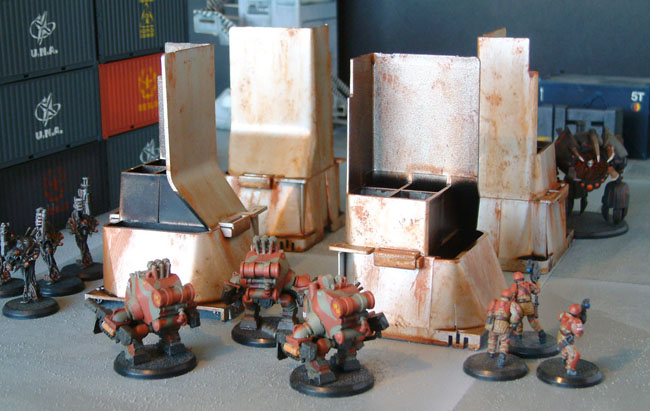
Much of Damocles is a big factory, and Elysée also has industrial areas. Such places often feature large structures like vents and chimneys that can make good-looking but still manageable terrain pieces for AT-43 games.
The towers shown on this page were created using plastic air ducts from the inside of a computer, which make sure the air from the fan blows over the processor and other components. They are easily removed, though, and since they are made from plastic and have an industrial-looking shape, they make good battlefield scenery with just a little work.
Vent towers do not have any game rules beyond the game statistics needed to allow their destruction, if the scenario being played allows terrain elements to be attacked.
| Structure points | Size | ||
|---|---|---|---|
| Vent tower | 14 | 6 | 6 |
The basic parts used to make the towers come from inside an ancient (±1999) HP Vectra computer with Pentium III processor. These were being broken up for scrap and spares, so the air ducts were easily salvaged.
There is not much construction involved in making the towers. For best results, you will need a modeller's razor saw, though a good knife and/or a file will also work.
The following photos give step-by-step instructions about how to make the towers shown on this page.
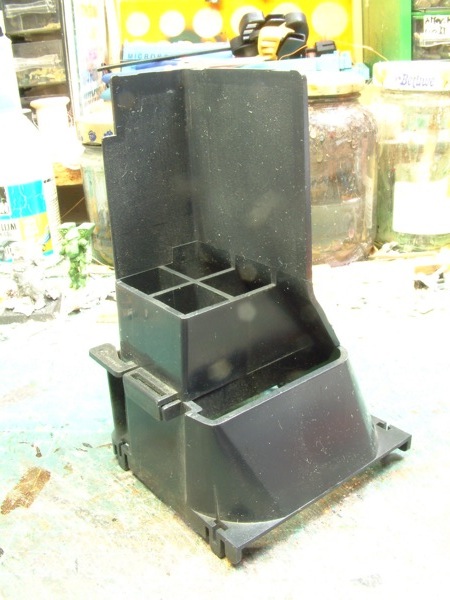
This is the duct as it came from the computer. It is made form black plastic and actually consists of two parts that slide and click together. It has been left in one piece here, but other interesting terrain pieces could be made by using the two parts individually.
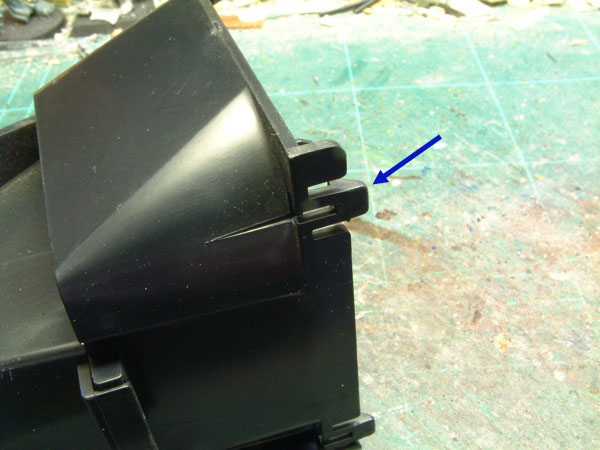
These ducts have four tabs on them, to secure the duct to the fan housing inside the computer; one is pointed out in the picture by the blue arrow. These extend a few millimeters below what will be the bottom of the vent tower, and although you can leave them on, it will look better with them removed, because then the tower will stand directly on the table instead of on little stilts.
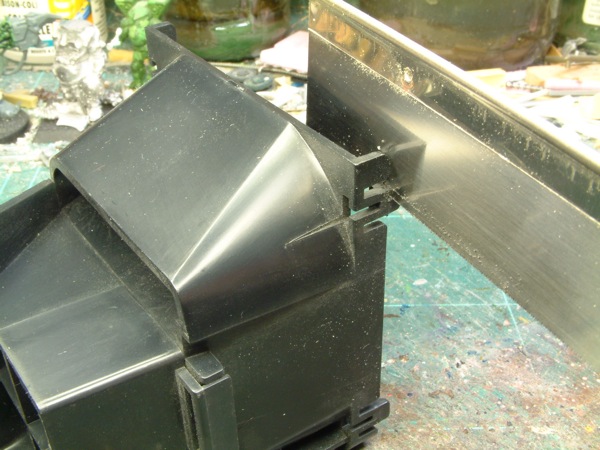
The easiest way to remove the tabs is with a modeller's razor saw, simply sawing flat along the edge so the part of the tab that extends below that will be cut off. It is possible to use a knife instead, but as this kind of plastic tends to be fairly thick and strong, the cut will probably not be as neat as with a saw.
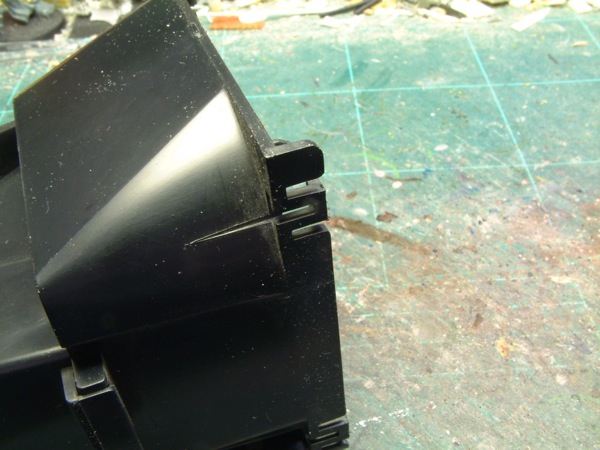
The duct with all the tabs removed. Be sure to remove any plastic dust that's likely to stick to the duct after sawing.

The ducts could be used as they are, but they will look better painted. As with construction, this is not very difficult and does not take much time: the tower was first given an overall coat of silver-colored paint, using a spraying can from a hardware store.
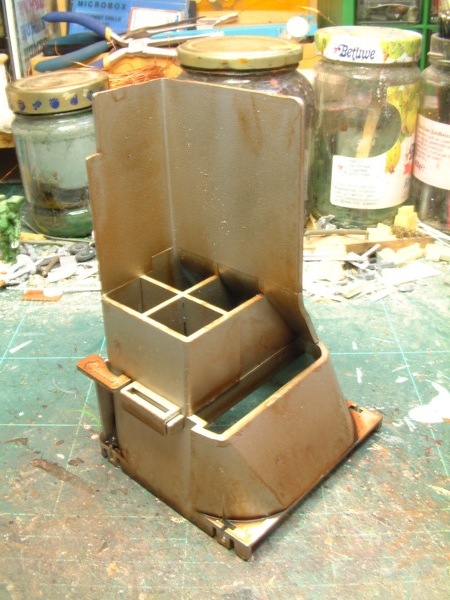
To make the tower look more realistic, it should be weathered. For the pictured one, a coat of thinned-down Games Workshop brown ink (no longer available, but other model and game paint manufacturers still sell such inks) was liberally applied all over the silver paint. Don't try to do this evenly, as that will make it look unrealistic and painted. Rather, encourage it to streak from vertically by painting up and down the tower with a wet brush.
Keep in mind that the ink will run down and pool along the bottom of the tower, so be sure to set it to dry somewhere it doesn't matter that the ink runs off — like on an old newspaper. Also remember to let it dry in the position it will be used in during games, else you will have streaks running in odd-looking ways.
If you want to apply markings to the towers, like letters, numbers or lines, it's best to do this before any weathering, because those markings would get rusty, dusty and dirty along with the rest of the tower.
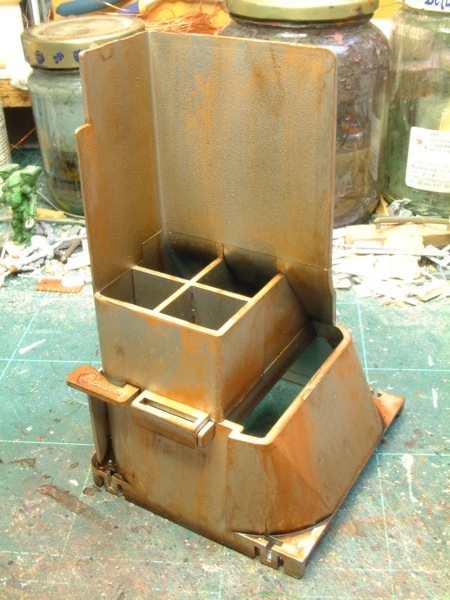
To increase the rust effect, drybrush and lightly stiple medium brown and/or orange paint onto the tower once the brown ink has dried. You can easily recreate rust by mixing shades of brown and orange, though just two colors were used on the tower shown: Games Workshop Bestial Brown and Vallejo Game Color No. 9 Hot Orange.
Try to be random in its application and color, to avoid it looking like the rust was painted on, and to make streaks vertical so it looks like they were caused by water running down. Also paint rust into areas where water might pool or run off, such as around protrusions and surface detail.
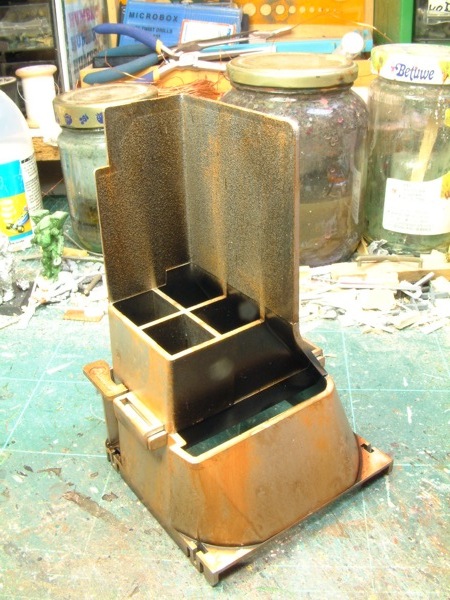
Painting was finished by spraying the inside black using another hardware store spraying can. Although the duct was made from black plastic to start with, a lot of this had been covered by the silver paint, and furthermore, spraying black from the inside out gives a soot effect that makes the tower look more realistic.
Towers like these can be made from all sorts of items and materials — anything reasonably tall and looking vaguely chimney-like can be turned into a similar structure quite easily using basic techniques like those shown above.